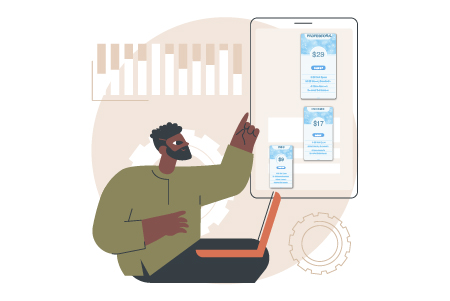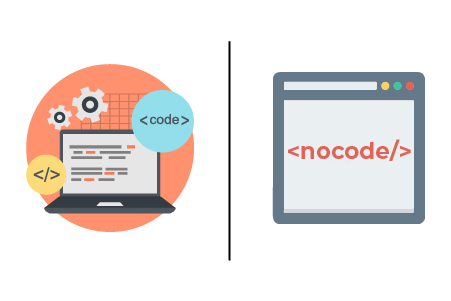Maintaining a healthy profit margin as your service expands in scope and the number of tenants is the goal of any pricing strategy. Designing appropriate price structures for your product is crucial when creating a commercial multitenant solution. Here, we inform technical decision-makers about the various SAAS Pricing Models they can evaluate and the advantages and disadvantages of each.
Exploring SAAS Pricing Models: Finding the Perfect Fit for Your Business
When developing a pricing model (or, SAAS Pricing Model) for your product, it is essential to strike a balance between the service’s cost and the return on value (ROV) for customers. A higher return on investment (ROI) for businesses could result from providing more adaptable payment plans for clients. However, this could increase the solution’s architectural and commercial complexity (and, therefore, your COGS).
Let’s break down the meaning of “Multi-tenant Solutions”
The term “multi-tenant” describes a type of cloud computing architecture in which multiple tenants (or users) work together in the same virtual space. Using this design, information belonging to one customer is completely hidden from the data belonging to another. Sharing hosting resources across many applications is an example of multitenancy in cloud computing. Public cloud services typically employ a multi-tenancy approach, with Amazon AWS, Microsoft Azure, and Google Cloud Platform (GCP) leading the pack.
The success of your business depends on several factors:
Models for the cost of Azure services
Which models are financially viable may depend on the pricing structures of Azure or third-party services that form the basis of your solution.
Habits while using a service
Your solution’s users may only need it during business hours, or there will be minimal active users.
Expansion of the storage facilities
The majority of answers build up a database over time. More data equals more storage and security costs, cutting your profitability per renter.
The isolating of a tenant
The degree to which your tenants are separated depends on your tenant arrangement. Do you have to worry about tenants abusing or overusing your shared resources if you provide them? What are the implications for your COGS and overall performance? Some pricing structures can’t turn a profit without more oversight over how resources are used. A flat rate pricing strategy may not be viable without additional measures, such as service throttling.
The duration of a lease.
Profitability may be lower for solutions with higher client attrition rates or services requiring more onboarding work, primarily if the pricing depends on consumption.
SLAs, or service-level agreements.
When tenants want more from you, it could signify that your solution is no longer financially viable. To properly develop your pricing models, you must first grasp the service-level expectations of your clients and the responsibilities you must fulfil.
Standardized methods of costing
Multitenant solutions can use a variety of standard pricing structures. There are architectural implications and business issues unique to each pricing scheme. Keeping your solution profitable as it matures requires understanding the nuances between various pricing schemes.
Pricing is dependent on what is consumed
Pay-as-you-go (PAYG) refers to a consumption paradigm. The more people utilize your service, the more money you’ll make.
Simple factors, such as the volume of data being contributed to the solution, can be considered when calculating consumption. Another option is to take into account multiple usage characteristics simultaneously. Although consumption models’ many advantages are clear, they can be challenging to apply in a multi-tenant setting. The complexity of your application’s charging operations could rise if you implement and support capacity reservations. Managing the refund and exchange processes for customers’ capacity reservations is another potential source of commercial and operational complications.
Individual user price
The service charges customers on a per-user basis, depending on how many people use it. Per-user pricing models are often used in multitenant solutions because they are easy to implement. However, their use is associated with several business risks.
Tariffs based on the number of users
In contrast to the per-user pricing model, which requires an estimate of the client’s anticipated usage, the usage-based pricing model simply charges the customer for those users who access the service within a given billing cycle.
Any reasonable time frame will do for this measurement. Since monthly cycles are so prevalent, this measure is sometimes denoted as monthly active users.
Costing on a per-item basis
The total cost of goods sold (COGS) is affected by several factors beyond the system’s user base. For instance, the number of devices often affects the cost of goods sold in device-oriented solutions, commonly known as the internet of things or IoT. A per-unit pricing model can be used in such systems, where a unit can be anything from a single device to an entire network.
As an added complication, the COGS of some solutions might be significantly impacted by a relatively small number of users. It is possible, for instance, that a solution marketed for traditional stores may benefit from a per-location price structure.
Levels of service and features used to determine cost.
You may charge your solution’s various levels of functionality differently. As an illustration, you could offer two different monthly flat rates or per-unit costs, one for a stripped-down version of your product with fewer features and the other for the entire suite. This concept has the potential to be profitable for businesses, but it requires refined engineering techniques to implement well. Nevertheless, this strategy, if well thought out, has great potential. Customers tend to choose feature-based pricing since they can pick the service tier that best suits their needs, regardless of how many features or extensions the service is. It also helps you identify which clients would benefit from additional features or redundancies and how to upsell them best.
Using a freemium model
A free tier of your service could include limited features and no SLA (service level agreement). On the other hand, you might consider a premium paid tier with SLA and other added benefits. A timed trial version of the free tier is another option; customers will have access to all features or subsets of them. “freemium” describes this (saas pricing models) pricing strategy , which is a further development of the “feature-based” approach.
Pricing based on production costs
If you want to avoid making a profit off of your solution, you might set the price so that each tenant pays just what it takes to run their portion of the Azure services. This method, also known as pass-through cost or pricing (or, saas pricing models), is sometimes utilized for non-profit multitenant systems. However, the cost of goods sold approach works best regarding internal-facing multitenant methods. This is because your Azure resource expenses must be allocated across all the tenants in your firm. It could also make sense if the business model relies on selling complementary products and services used in tandem with the multitenant offering.
Predetermined rates
You charge a monthly or annual fee using your solution in this pricing strategy. Regardless of usage or other factors, all customers pay the same flat rate. Enterprise customers frequently request this approach since it is easiest to deploy and understand. However, if you keep adding new services or tenant consumption rises without corresponding revenue increases, it can quickly become unprofitable.
Promotional Costs
Once you have established your price strategy, you can adopt commercial methods like offering discounts to encourage expansion. Price reductions can be applied to consumption, per-user, and per-unit pricing structures (or SAAS Pricing Models). In most cases, the only architectural adjustment needed to accommodate a discount pricing model is the additional support for a more intricate billing system. The scope of this paper does not permit an in-depth analysis of the commercial advantages of discounting.
Standard forms of discounted pricing include:
Set costs
No matter how much you buy or consume, the price remains the same per user, unit, or consumption. To put it simply, this is the easiest method. Customers who use your solution frequently may believe that they should receive a price break due to economies of scale.
Price discrimination
The price per item is lowered when volume increases, either through customer purchases or consumer consumption. Clients will find this more commercially appealing.
Tiered pricing structure
With the increased volume, you can lower the price per item. However, you make these adjustments in discrete steps. For example, you may set a higher price for the first 100 users, a reduced price for the subsequent 101 to 200 users, and a lower price after that. Potentially more money can be made.
Discounts for non-production settings
Customers often need a staging or development area to run their tests, conduct training or write their docs. Consumption and cost to operate are typically lower in non-production settings. Similarly, clients assume testing and development environments will cost much less than production. Assuming you’re providing non-production environments, you have a few options that could work:
- Provide a free tier, similar to what you provide for paying consumers. This needs close monitoring because some companies may set up numerous test and training environments, each requiring its own resources to run.
- Provide a limited version of your service for trial or educational purposes. Customers without a current paid tenant will not be able to use this plan.
- Provide non-production tenants with a reduced or no service level agreement and lower per-user, per-active-user, or per-unit cost.
- Tenants that pay by square foot may be able to include a non-production area in their lease agreement.
Pricing strategies that fail to earn a profit
If your cost to provide the service exceeds its revenue, your pricing plan is not profitable. For instance, you may charge a flat payment per tenant with no limits on usage yet construct your service using Cloud resources based on consumption and without constraints on usage by individual tenants. Tenants overusing your service could drive your costs up to an unsustainable level.
We should avoid less profitable pricing structures in most cases.It’s possible, though, to employ a non-profitable pricing strategy in the following circumstances:
- To facilitate expansion, a no-cost service is provided.
- Services and additional features are examples of ways businesses might generate extra income.
- One business benefit of hosting a particular tenant is that they can serve as an anchor tenant for a new market.
- There are measures you may take to lessen the blow if you accidentally develop a loss-making pricing strategy, such as–
- Put usage caps in place to restrict access.
- Utilize seat reservations to ensure enough service
- A request to upgrade the tenant’s service plan is made.
To sum up
In most cases, you’ll need to make some educated guesses about the solution’s expected usage before you can begin developing a SAAS Pricing Models price strategy for it. Your pricing model could lose money if these presumptions are wrong or usage trends shift over time. Risky pricing strategies are those that could eventually lead to losses. Typically, new functionality will be added to SaaS Pricing Models systems regularly. As a result, the ratio of benefits to users (ROV) rises, which could boost the product’s uptake. If the adoption of new features increases utilization but is not reflected in the price model, the solution may become unprofitable.
Learn More: Application Modernization Services of Metaorange Digital



